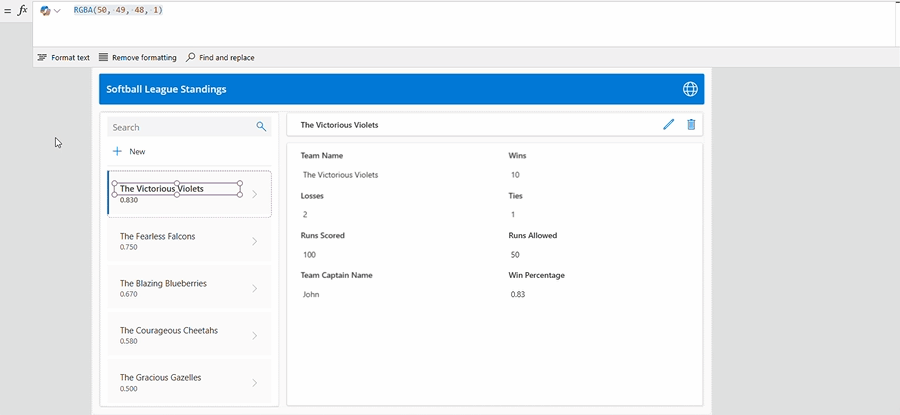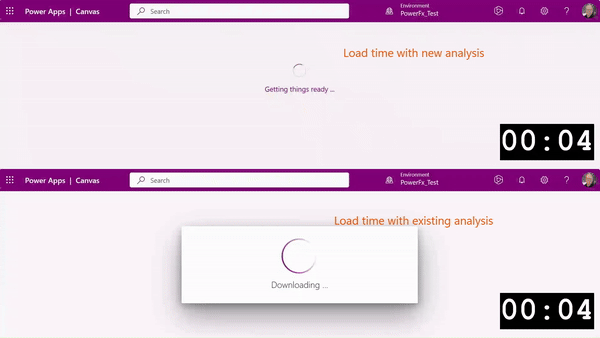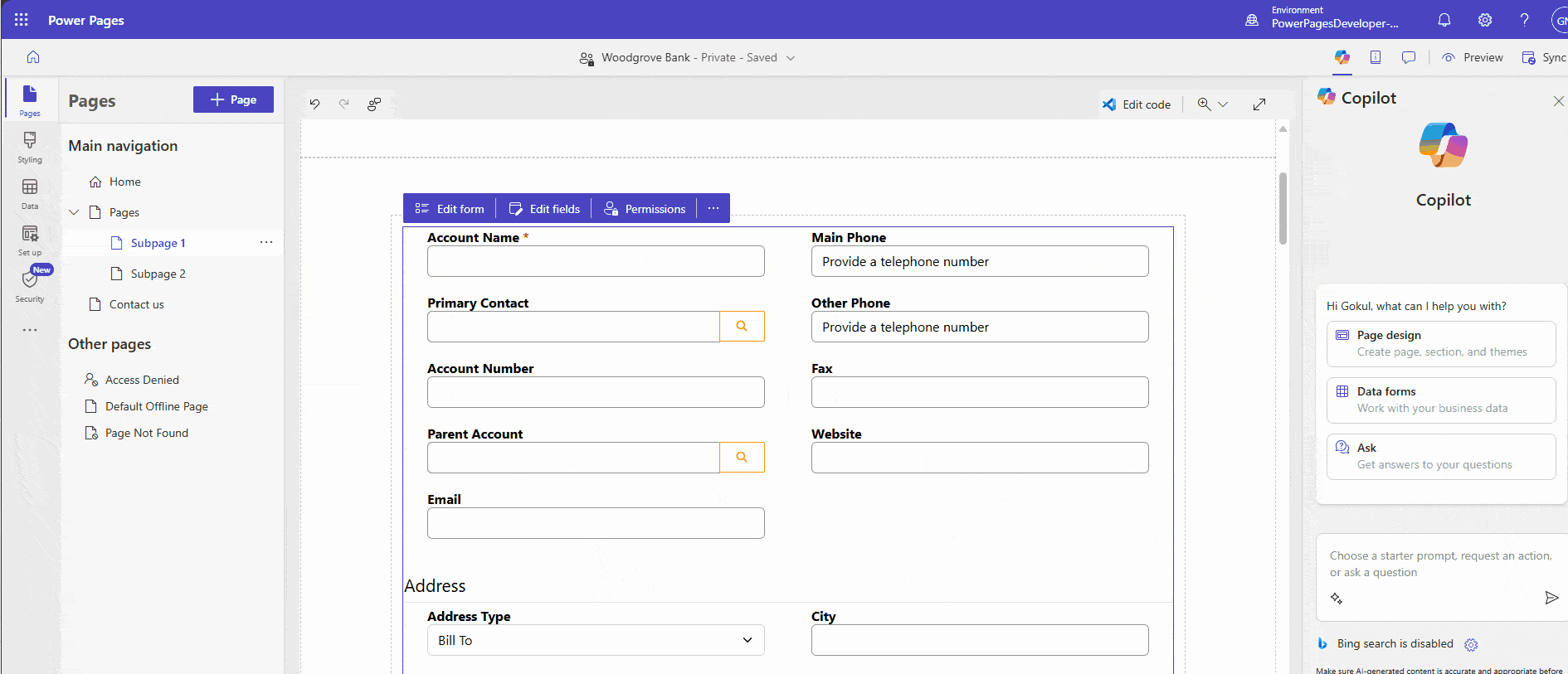
What’s new in Power Apps: July 2024 Feature Update
Get started with the latest updates today!
Jump into Power Apps to try the latest updates, you can use an existing environment or get started for free using the Developer plan.
AI-powered Development
Explain formulas in more languages!

The ability to have Copilot explain a formula was released in English earlier this year, and thousands of people are using this capability every month to understand Power Fx formulas that have been written inside of Power Apps. Explaining a formula can be helpful when someone else wrote a formula and you’re trying to understand it, when learning Power Fx, or validating Power Fx that has been generated for you by Copilot. We are happy to announce that we have expanded the language support to 19 additional languages:
Chinese (simplified), Czech, Danish, Dutch, Finnish, French, German, Greek, Italian, Japanese, Korean, Norwegian (Bokmål), Polish, Portuguese, Russian, Spanish, Swedish, Thai, and Turkish
The language preference is based on the primary language browser setting, so set the browser language accordingly to test this new functionality.
Comment generated formulas is now on by default for new apps

More makers now have access to the ability to generate Power Fx from natural language using Copilot. Any new app that is created will allow makers to use the comment (// or /*) syntax to input a text description of what they want the formula to do, pause and wait a few seconds or push enter to have copilot begin generating a formula. If a formula can be generated on the prompt provided, it is shown and the user can accept or reject the suggestion or can rewrite the prompt to have the copilot try again.
To turn on this capability for existing apps, go to Canvas Studio settings > Updates > Preview > and turn the toggle to On for “Copilot comment-generated formulas”
Explore and test Dataverse in the Web API playground

The API playground is a preauthenticated software testing tool that helps makers quickly and conveniently interact with the Microsoft Dataverse Web API. This web application allows developers to test and experiment with different API endpoints without the need for extensive setup or authentication processes. It also conveniently presents certain available actions and links to documentation for faster learning. Use this tool to explore what’s possible in the RESTful API, test user-defined workflows, and more.
Key features
• Securely pre-authenticated: All API interactions occur within a secure and controlled platform environment, leveraging existing platform security features to ensure only authorized users can make API calls. No more third parties to rely on or worry about.
• Convenient web interface: Quickly interact with the Dataverse Web API without the need for extensive setup like software downloads or non-Microsoft account setup. You can access the tool from the Dataverse accelerator, a Microsoft app available in all new Dataverse environments and can be installed in any environment.
• Educational & user friendly: Presents the various actions and capabilities available in the Dataverse Web API, making it easy to quickly learn what’s possible and how to implement it. Implemented with adherence to Microsoft Coherence best practices + latest Fluent 2 alignment with first party maker portal standards.
New Analysis Engine Now Generally Available

While you edit or play your app in Studio, a continuous analysis of app elements and their interactions is happening in the background. This lets Studio determine the types of all the variables and collections in your app, maintain a real time dependency graph of relationships between different expressions, and keep track of what columns your app uses from every data source. For example, this allows us to know that if you change an expression Set(x, 5) to Set(x, {Lorem: “Ipsum”}) that the type of x is now a record instead of a number, and any references in your app to x + 1 will therefore be marked as erroneous.
We’re thrilled to announce that the New Analysis Engine is now generally available (GA)! This major milestone is all thanks to the feedback from our early adopters and app makers during the experimental and preview stages.
Call SQL Server procedures directly in Power Fx

We are excited to announce that calling SQL Server stored procedures in Power Fx is now generally available in all regions. You do not need to call a Power Automate Flow to use a stored procedure making development of Power Apps for SQL easier for authors and faster overall performance for both authors and end users. The ability to call stored procedures for the SQL connector directly is an extension to the existing tabular model and gives users access to tables, views, and stored procedures. This feature extends our ongoing support of SQL Server as a primary development target for Power Apps.
Enhanced file upload experience for file attachments in Power Pages

We’re thrilled to announce that Microsoft Power Pages now support file uploads up to 10GB! But that’s not all—your end users will also enjoy an enhanced experience with these new capabilities.
Now you can upload files of sizes up to 10GB for form attachments with Azure Blob Storage integration. No more small file attachment size limits! Plus, you can also enjoy the improved file upload experience with features like file size and upload progress, delete and download files, and error messages. And if you need more customization, you can use our web API to access and manage your attachments stored in Azure.
Learning and Documentation Updates
Videos
Demo: Build intelligent and scalable solutions with Power Apps and Power Platform
In this extensive demo you can see the most up-to-date ways to build enterprise-grade solutions with Power Apps and Power Platform. Understand how Copilot in Power Apps, intuitive Power Apps Studio experience, integration with developer tools, and collaborative features help developers accelerate their work.
Rapid Multi-Table App Development with Power Apps Copilot
In this video you’ll see how to simplify your business solutions with Power Apps Copilot. You’ll learn how to work with complex data models and create multi-table entity relationship diagrams based on your AI prompt and turn that into a fully functional business application with a Dataverse data structure and responsive, offline capable Power Apps canvas app front end.
Boost productivity with this Power Apps YAML hack
YAML is here in Power Apps and making it easier than ever to share and copy and paste code between Power Apps… but are you using it wisely? In this video you’ll learn what you can do with YAML copy/paste in Power Apps and what approaches you should consider when using YAML code snippets to boost your productivity and avoid maintenance nightmares.
Training paths and Labs
New Training Paths
Updated Training
- Create a machine ordering Power Apps canvas app – Online Workshop
- Integrate a Power Apps app with Power Automate – Online Workshop
- Create a Dataverse table for the machine ordering app – Online workshop
- Create a model-driven Power Apps app for machine ordering – Online Workshop
- Use Copilot in Power Apps

